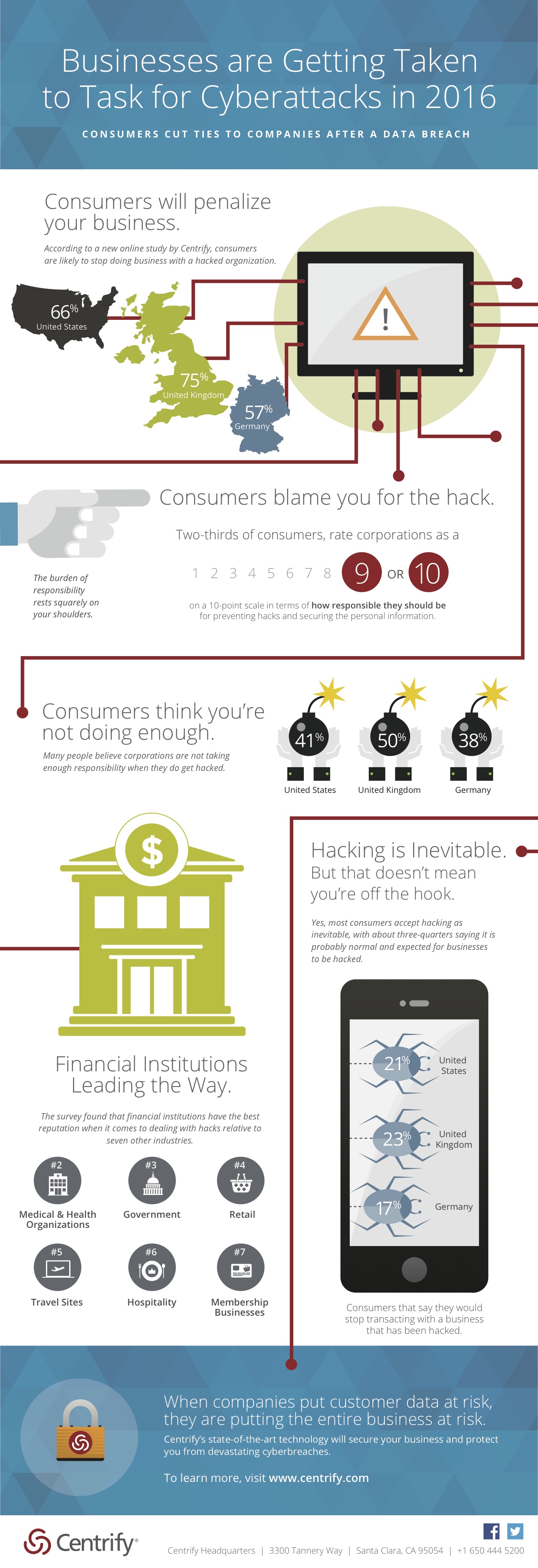While most consumers are coming to consider hacking normal, they are definitely far from letting businesses off the hook for their failures to guard against cyberthreats. According to a new study from enterprise security firm Centrify, about three quarters of adults say it is probably or definitely normal and expected for businesses and large organizations to be hacked, and 66% of adults in the U.S. are at least somewhat likely to stop doing business with a company that has suffered a cyberbreach – a figure that rises to 75% in the U.K.
Consumers also firmly believe that the burden of responsibility for guarding against cyberrisk falls squarely on businesses. On a 10-point scale, two thirds of respondents rated corporations as a nine or 10 in terms of how responsible they should be for preventing hacks and securing customers’ personal information. When companies are hacked, they consequently also bear the burden of being fully accountable to their customers, and many are failing, further compounding the odds of concrete consequences from clients. In the U.S., 41% said that corporations do not take enough responsibility when they are hacked, a sentiment shared by 50% of U.K. respondents.
The study found that 21% of U.S. consumers say they are “very likely” to stop doing business with a company that has been hacked. Those most likely to do so include those who have had their personal information compromised in a hack, those who are tech savvy, and those who are frequent online shoppers.
“The study clearly points to the need for organizations to dramatically bolster their security systems and do everything in their power to protect consumer information and prevent a breach,” said Tom Kemp, CEO of Centrify. “When companies put customer data at risk they are really putting their entire business at risk. Consumers simply will not tolerate doing business with hacked organizations. It’s time for organizations to take full responsibility for their security and put the proper measures in place once and for all.”
Check out some of the study’s findings in the infographic below:

